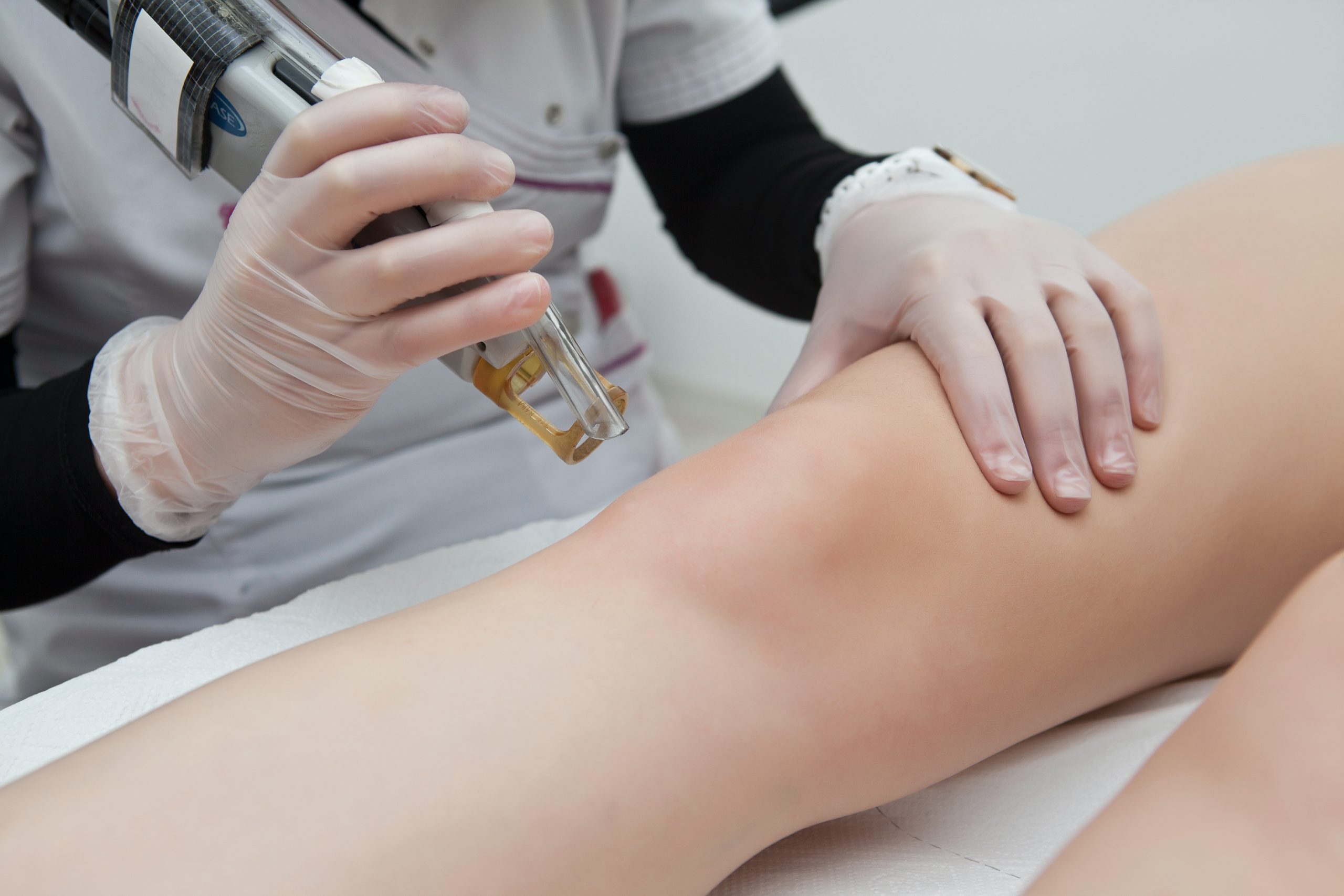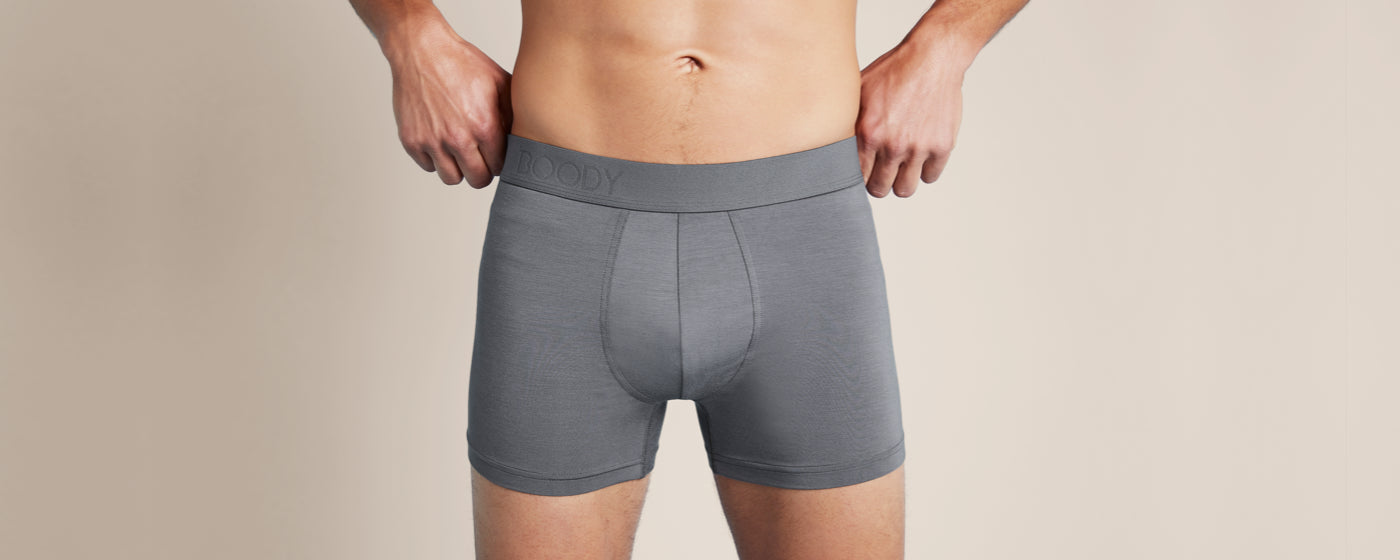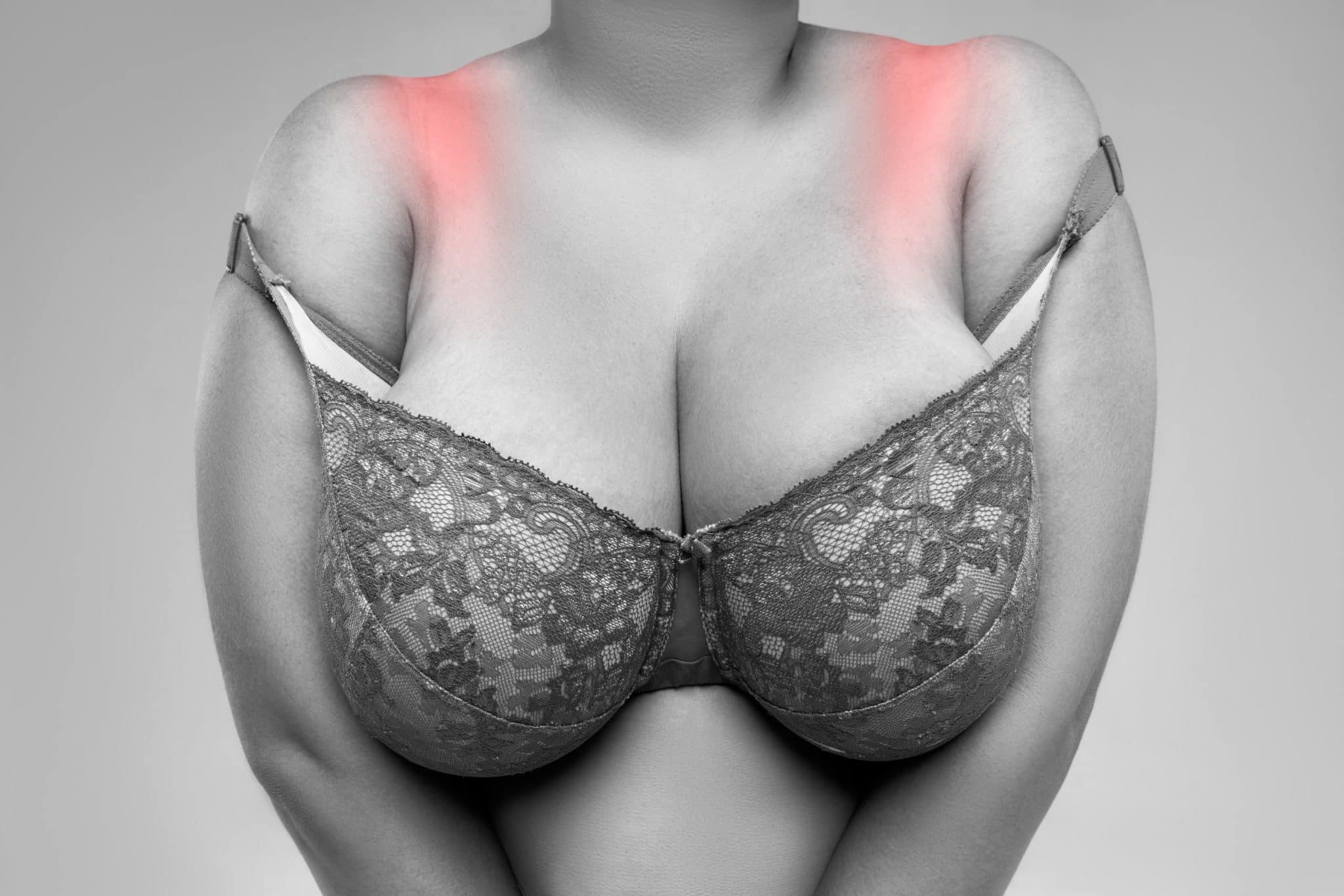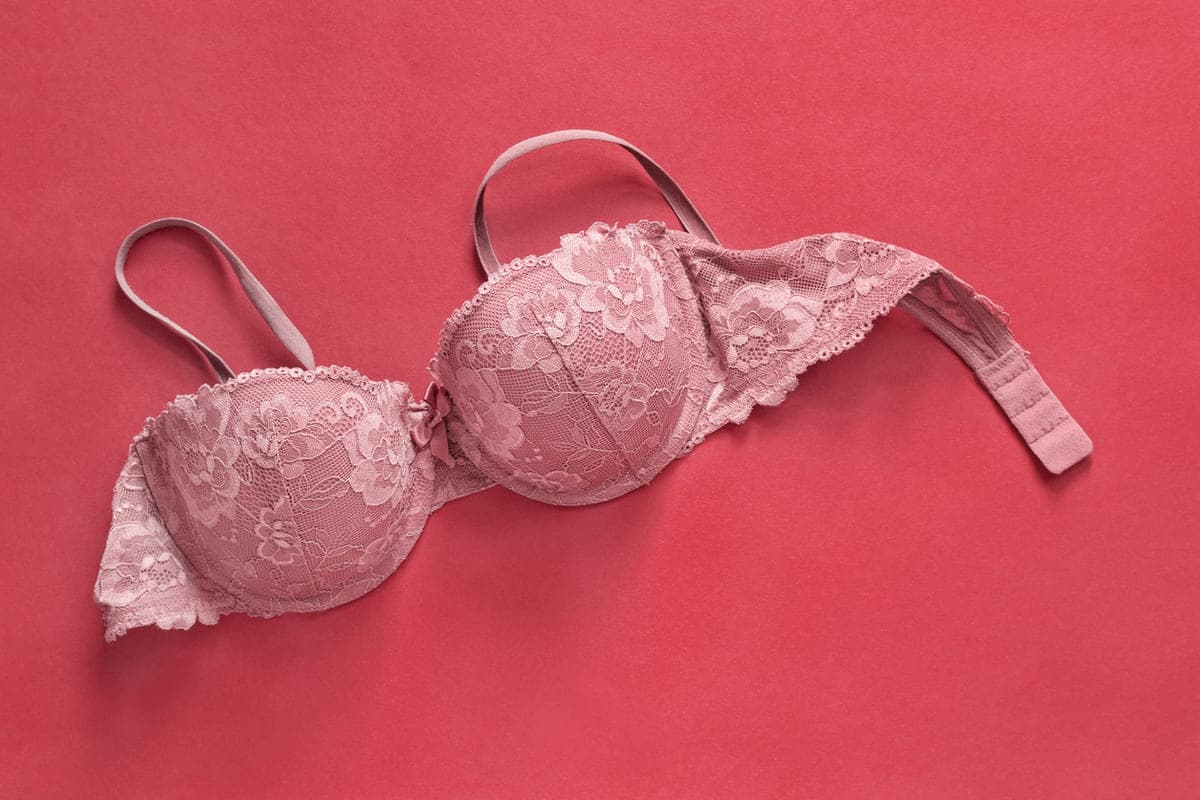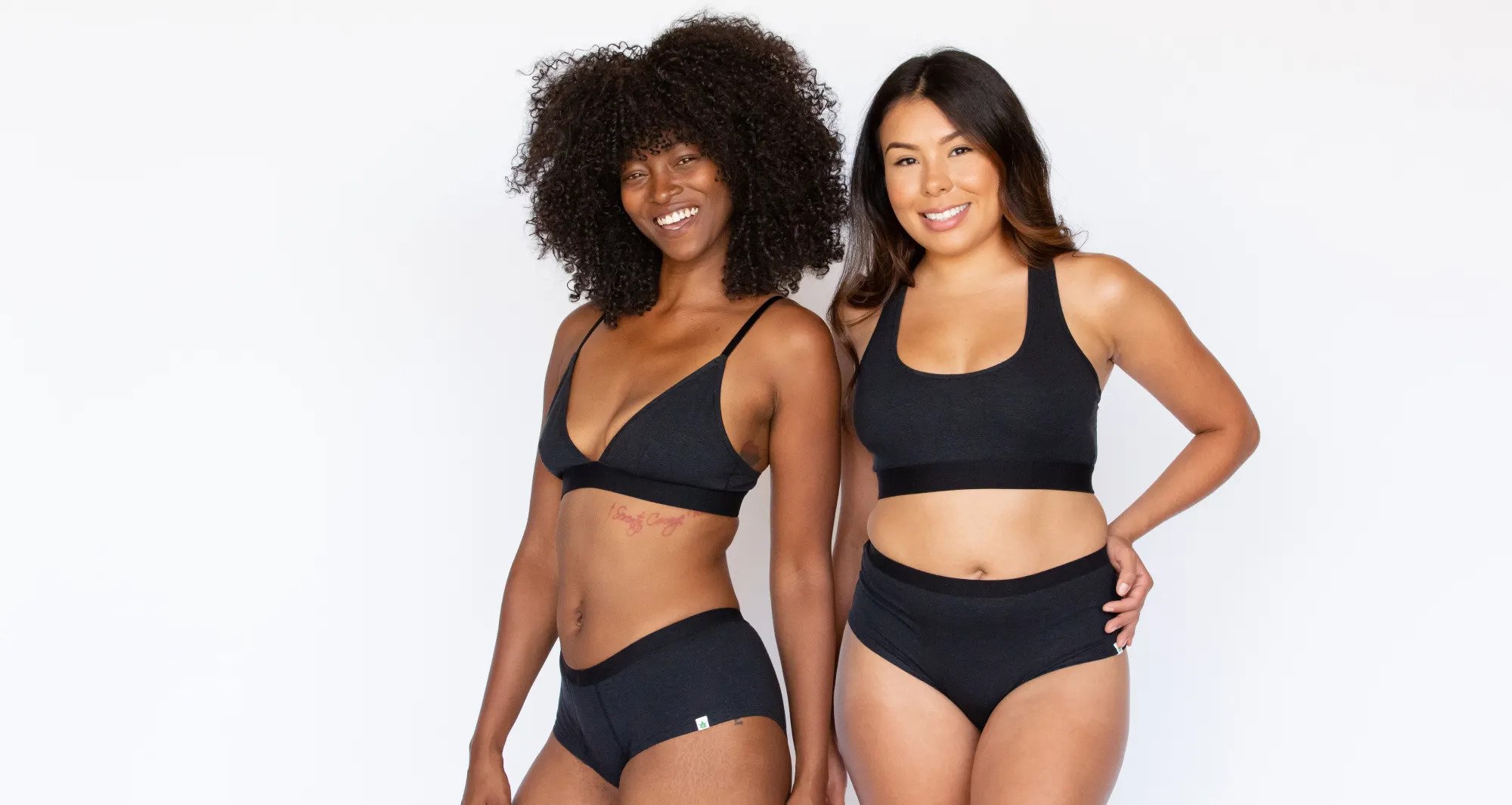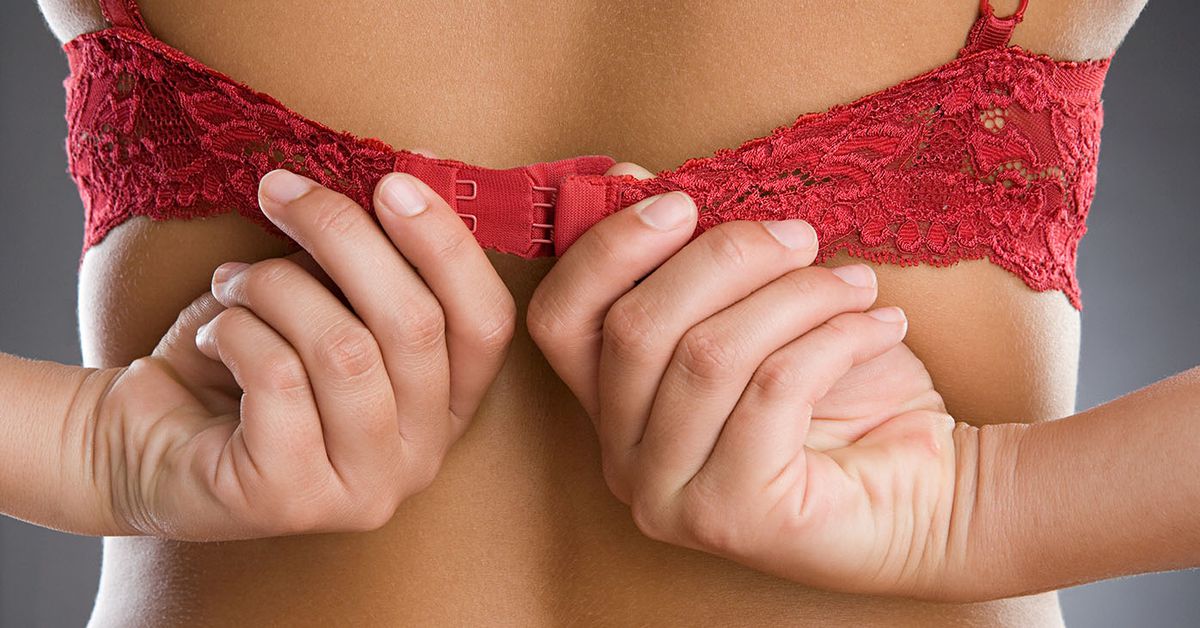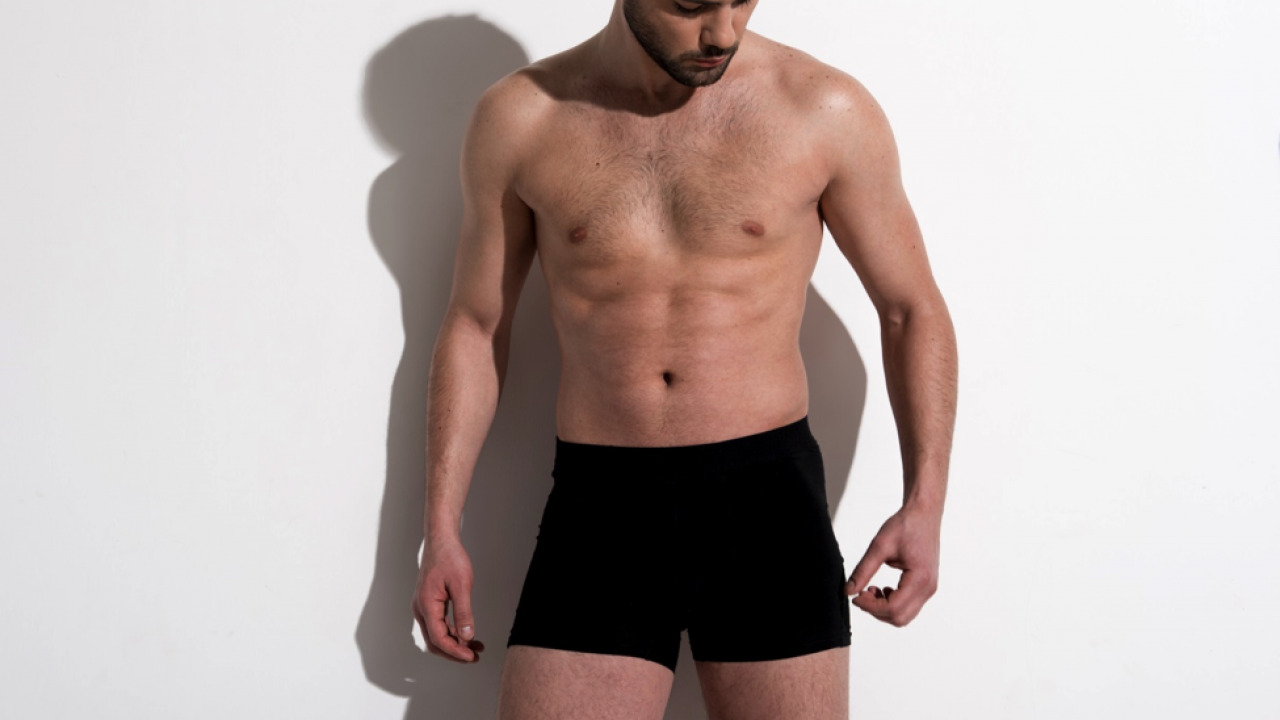Home>Women's Underwear>Bras>Why Do My Breasts Fall Out Of The Bottom Of My Bra
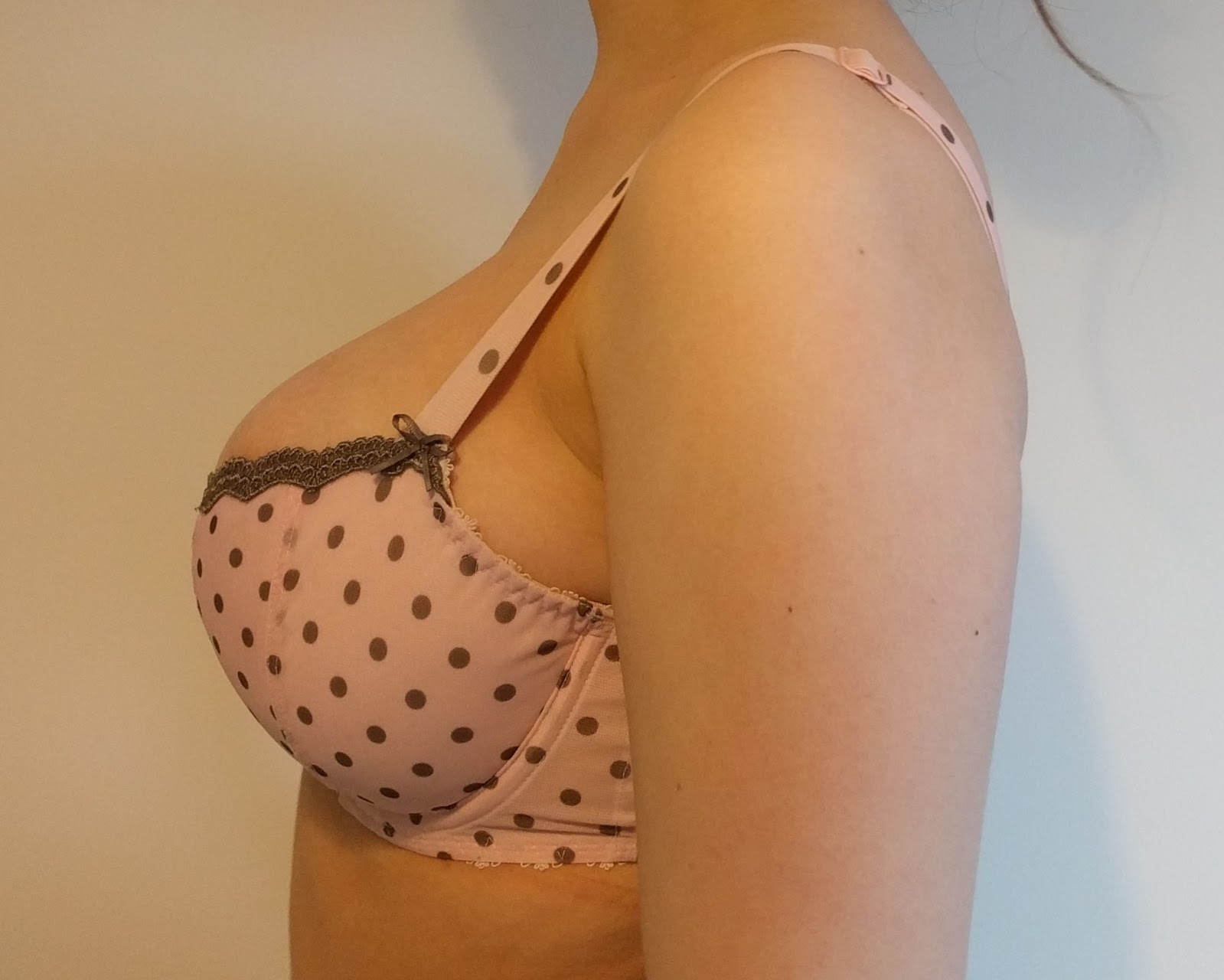

Bras
Why Do My Breasts Fall Out Of The Bottom Of My Bra
Modified: August 2, 2023
Discover the reasons behind your breasts falling out of the bottom of your bra and find effective solutions with the help of our comprehensive guide on bras.
(Many of the links in this article redirect to a specific reviewed product. Your purchase of these products through affiliate links helps to generate commission for Under-tec.com, at no extra cost. Learn more)
Table of Contents
- Introduction
- Understanding the Anatomy of Breasts
- Selecting the Right Bra Size
- Common Bra Fitting Mistakes
- Lack of Support
- Age and Changes in Breast Tissue
- Weight Fluctuations
- Pregnancy and Breastfeeding
- Wearing the Wrong Bra Style
- Lack of Proper Care and Maintenance
- Tips for Keeping Breasts in the Bra
- Conclusion
Introduction
Welcome to the perplexing world of bra fit! If you’ve found yourself constantly dealing with the frustration of your breasts falling out of the bottom of your bra, you’re not alone. Many women experience this common issue, and it can be both uncomfortable and embarrassing. The good news is that there are several factors that can contribute to this problem, and with a little knowledge and some tweaks to your bra selection and fit, you can achieve the support and comfort you deserve.
Understanding the anatomy of your breasts is the first step in finding a solution. Breasts are composed of glandular tissue, fat, and connective tissue, all supported by ligaments. These ligaments are responsible for maintaining the shape and position of your breasts. However, factors like age, weight fluctuations, pregnancy, and breastfeeding can all impact the integrity of these ligaments, leading to sagging or drooping.
Choosing the right bra size is crucial for proper support and comfort. Many women are wearing the wrong bra size without even realizing it. Whether it’s a band that’s too loose or cups that are too small, an ill-fitting bra can contribute to breasts spilling out from the bottom. Taking the time to measure your bra size accurately, or getting professionally fitted, can make a world of difference.
Common bra fitting mistakes can also lead to breasts falling out of the bottom of the bra. Some women mistakenly believe that a smaller cup size will increase cleavage, but in reality, it can result in spillage. Additionally, not adjusting the straps properly, wearing a bra with an incorrect band size, or selecting the wrong bra style for your breast shape can all contribute to this issue.
Another reason for breasts falling out of the bottom of the bra is a lack of proper support. As mentioned earlier, ligaments play a crucial role in breast support, so choosing a bra with good lift and coverage is important. Bras with underwire, reinforced cups, and adjustable straps can provide the necessary support to keep your breasts in place.
Understanding the Anatomy of Breasts
Before delving into the reasons why your breasts may be falling out of the bottom of your bra, it’s essential to understand the anatomy of your breasts. Breasts are complex structures composed of glandular tissue, fatty tissue, and connective tissue. This combination of tissues gives breasts their size, shape, and texture.
Glandular tissue, also known as mammary glands, is responsible for producing milk during breastfeeding. The amount of glandular tissue varies from woman to woman and can influence the size and firmness of the breasts. Fatty tissue, on the other hand, gives breasts their softness and plumpness. The distribution of fat within the breasts can differ, leading to variations in breast shape.
Cooper’s ligaments provide crucial support to the breasts. These ligaments are fibrous bands that connect the glandular and connective tissues to the chest wall. They help maintain the shape and position of the breasts. However, as women age or experience significant changes in weight, pregnancy, or breastfeeding, these ligaments can stretch or weaken, resulting in sagging or drooping of the breasts.
The shape and size of breasts can also be influenced by genetics, hormones, and overall body composition. Some women naturally have fuller or rounder breasts, while others may have more elongated or asymmetrical breasts. Each breast is unique, and understanding your own breast shape can help you make more informed choices when selecting a bra.
It’s important to remember that breast shape and size can change throughout a woman’s life. Hormonal fluctuations, weight gain or loss, pregnancy, and breastfeeding can all impact breast tissue. These changes may result in the need for different bra sizes or styles to accommodate the new shape or size of your breasts.
By understanding the complex anatomy of your breasts, you can have a better grasp of the factors that contribute to your breasts falling out of the bottom of your bra. The next step is to ensure you are selecting the right bra size and style to provide the necessary support and comfort for your unique breast shape and size.
Selecting the Right Bra Size
One of the key factors in preventing your breasts from falling out of the bottom of your bra is selecting the right bra size. Many women are unknowingly wearing the wrong size, which can lead to discomfort, lack of support, and an unflattering fit.
Getting your bra size accurately measured is the first step in finding the perfect fit. While it’s possible to measure yourself at home, visiting a professional bra fitter can provide a more accurate measurement. These experts have the knowledge and experience to determine your band size and cup size accurately.
When measuring for your bra size, pay attention to both the band size and the cup size. The band should fit snugly around your ribcage without digging in or riding up. If the band is too loose, it will not provide optimal support and can cause your breasts to slip out of the bottom of the bra.
The cup size is equally important. Cups that are too small will result in your breasts spilling over the top or out of the sides, while cups that are too big can create gaping or wrinkling. Ensuring a proper fit in the cup is crucial for keeping your breasts securely in place.
Remember that bra sizes can vary among different brands and styles, so it’s essential to try on bras to determine the best fit for your specific needs. Pay attention to how the bra feels and looks on your body, and don’t hesitate to try different sizes or styles until you find the one that truly fits you.
In addition to finding the right band and cup size, consider the style of bra that works best for your breast shape. Different bra styles provide varying degrees of coverage, lift, and support. For example, full-coverage bras with underwire can provide excellent support for larger breasts, while balconette or plunge bras may work better for those with smaller or less full breasts.
Lastly, keep in mind that bra sizes can change over time due to factors such as weight fluctuations, hormonal changes, and aging. It’s a good practice to have your bra size checked regularly to ensure you are always wearing the right size.
Common Bra Fitting Mistakes
When it comes to bra fitting, there are several common mistakes that many women make. These mistakes can contribute to your breasts falling out of the bottom of your bra and prevent you from achieving the ideal fit and support. Understanding these errors can help you avoid them and improve your overall bra-wearing experience.
One of the most common bra fitting mistakes is wearing the wrong band size. The band should provide the majority of the support for your breasts, so it’s crucial to choose a band size that fits snugly around your ribcage. If the band is too loose, it won’t provide the necessary support, causing your breasts to fall out of the bottom. On the other hand, if the band is too tight, it can lead to discomfort and breathing difficulties.
Another mistake is wearing cups that are too small. When the cups are too small, they can cause your breasts to spill over the top or sides of the bra, resulting in an unflattering and uncomfortable fit. Take the time to ensure that the cups fully contain your breasts without any bulging or excess skin.
Many women also make the mistake of not adjusting the straps properly. The straps should provide additional support but not bear the entire weight of your breasts. If the straps are too loose, they can slide down, causing your breasts to fall out of the bottom of the bra. Adjust the straps so that they are comfortably snug without digging into your shoulders.
Choosing the wrong bra style for your breast shape is another common mistake. Different bra styles offer varying levels of coverage, lift, and support, so it’s important to find a style that works well with your breasts. For example, if you have a full bust, a bra with full coverage and an underwire can provide optimal support and containment.
Lastly, failing to consider the impact of weight fluctuations on your bra size can also lead to fitting issues. Weight gain or loss can significantly alter your breast size, so it’s essential to reassess your bra size after any significant changes. Regularly checking your bra size ensures that you have the right fit and support for your current body shape.
Avoiding these common bra fitting mistakes can greatly improve your comfort and prevent your breasts from falling out of the bottom of your bra. Take the time to find the right band size, cup size, and style for your unique breast shape, and don’t hesitate to seek professional help if needed.
Lack of Support
One of the primary reasons why breasts may fall out of the bottom of a bra is a lack of proper support. When a bra fails to provide adequate support, the breasts can shift or move, leading to discomfort and an unflattering fit.
Support is crucial because breasts are composed of glandular and fatty tissue, which can be heavy. Without proper support, the weight of the breasts can cause them to droop or sag, leading to bulging at the bottom of the bra.
One way to ensure proper support is by selecting a bra with an underwire. Underwire bras have a structured wire beneath the cups that encase and lift the breasts. This extra support helps to keep the breasts in place and prevents them from spilling out of the bottom of the bra.
Reinforced cups can also provide extra support. Bras with molded cups or padding help to maintain the shape, lift, and containment of the breasts. These cups prevent the breasts from spreading or flattening, reducing the risk of them falling out of the bottom of the bra.
Adjustable straps are another essential element in providing support. Straps that are too loose can cause the bra to slide down, resulting in the breasts falling out of the bottom. Straps that are too tight can dig into the shoulders and lead to discomfort. Ensure that the straps are properly adjusted to provide a secure and comfortable fit.
It’s important to note that as breasts change in shape, size, or weight throughout various life stages, the level of support required may also change. Pregnancy, breastfeeding, and menopause can impact breast tissue and require bras that provide additional support to accommodate these changes.
Considering the level of support a bra provides is crucial when selecting the right bra style. Full-coverage bras, sports bras, and bras with thicker straps are often designed with extra support in mind. Understanding your individual support needs and choosing the appropriate bra style can greatly reduce the risk of your breasts falling out of the bottom.
Remember, every body and breast shape is unique, and what works for one person may not work for another. It may take some trial and error to find the bras that offer the right level of support for you, but once you find them, your breasts will be comfortably and securely supported throughout the day.
Age and Changes in Breast Tissue
As women age, their breast tissues undergo natural changes that can contribute to breasts falling out of the bottom of a bra. Understanding these changes and how they affect bra fit can help you find solutions to keep your breasts well-supported.
One of the primary age-related changes in breast tissue is a decrease in elasticity. As you get older, the ligaments and connective tissues that provide support to the breasts become weaker and less resilient. This can result in sagging or drooping of the breasts, making it more likely for them to spill out of the bottom of a bra.
In addition to a decrease in elasticity, hormonal changes that occur with age can impact breast size and shape. The levels of estrogen, progesterone, and other hormones fluctuate as women go through perimenopause, menopause, and postmenopause. These hormonal changes can lead to changes in breast size, density, and overall firmness.
With age, it’s not uncommon for breasts to become less full or more pendulous. The combination of decreased elasticity and changes in hormone levels can result in breasts that are softer, less perky, and more prone to spillage in poorly fitting bras.
It’s important to recognize that these natural changes in breast tissue are normal and not something to be ashamed of. However, understanding these changes and their impact on bra fit can help you make informed choices when selecting bras that provide the necessary support.
As breasts change with age, it may be necessary to reassess your bra size and style. This can involve going through the process of measuring your bra size again or seeking the assistance of a professional bra fitter. The right bra size, along with styles that offer better lift and support, can help compensate for the changes in breast tissue and keep your breasts comfortably contained within the bra cups.
Opting for bras with wider bands, adjustable straps, and underwire can provide additional support and prevent the bottom of the bra from riding up or causing the breasts to spill out. Bras with molded cups or padding can also help enhance shape and provide necessary lift.
Remember that each woman’s breasts and body are unique, and what works for one person may not work for another. Experiment with different bra styles, sizes, and brands to find the options that offer the best fit and support as your breasts undergo changes with age.
Weight Fluctuations
Weight fluctuations can have a significant impact on bra fit and contribute to breasts falling out of the bottom of the bra. Whether it’s due to weight gain or weight loss, changes in body composition can affect the size and shape of the breasts.
When you gain weight, your overall body size increases, including the size of your breasts. This can result in the bras you previously wore becoming too tight and unable to provide the necessary coverage and support. As a result, your breasts may spill out of the bottom or sides of the bra.
Conversely, weight loss can lead to a decrease in breast size. As you shed pounds, the fatty tissue in your breasts may reduce, causing them to become smaller and less full. Bras that were once a perfect fit may no longer offer the necessary support, leading to your breasts slipping out of the bottom.
It’s important to regularly reassess your bra size as your weight fluctuates. If you’ve experienced significant weight changes, it may be necessary to measure yourself again or seek professional fitting to determine your new bra size. Wearing a properly fitted bra can help accommodate your changing breast size and prevent issues with spillage or discomfort.
Additionally, considering bra styles that offer adjustability, such as bras with adjustable bands and straps, can help accommodate fluctuations in weight. These features allow you to customize the fit of the bra as your body size changes, ensuring that your breasts are properly supported and contained within the bra cups.
If you’re actively working on weight loss or weight gain goals, it’s important to reassess your bra size regularly during this process. As your body undergoes these changes, your breasts may continue to transform in size and shape. By staying mindful of these changes and making necessary adjustments to your bra selection, you can ensure optimal comfort and support.
Remember, weight fluctuations are a normal part of life, and it’s essential to embrace and celebrate your body at every stage. Wearing well-fitting bras that support and uplift your breasts can help you feel confident and comfortable throughout your weight journey.
Pregnancy and Breastfeeding
Pregnancy and breastfeeding are transformative experiences that can significantly impact the size and shape of your breasts. These changes can result in the need for different bra sizes and styles to accommodate the demands of pregnancy, nursing, and postpartum.
During pregnancy, hormonal changes cause increased blood flow and milk production, leading to breast enlargement and swelling. As a result, your pre-pregnancy bras may become too tight and uncomfortable, causing your breasts to spill out of the bottom of the bra. It’s essential to opt for maternity bras that offer extra stretch, adjustable bands, and room for growth to support your changing breast size.
Once your baby arrives, breastfeeding can further affect the size and shape of your breasts. Engorgement and fluctuations in milk supply can cause your breasts to change in size throughout the day. Wearing nursing bras that have drop-down cups or easy-access flaps can provide convenience and proper support for breastfeeding while keeping your breasts securely in place.
When shopping for nursing bras, it’s important to choose ones that are well-fitted and designed for nursing mothers. Look for bras with adjustable straps and multiple closure options to accommodate changing breast size and offer the necessary support. Nursing bras with features like soft cups, seamless designs, or removable padding can provide comfort and adaptability as your breasts continue to evolve during breastfeeding.
After breastfeeding is complete, your breast size may change again, potentially resulting in loose or sagging skin. This is common as the breast tissue transitions back to its pre-pregnancy state. Consider bras with molded cups, underwire, or additional support features to help lift and shape the breasts, providing a more flattering fit.
Throughout pregnancy, breastfeeding, and postpartum, it’s essential to reassess your bra size regularly. Your breast size can fluctuate significantly during this time, and a bra that fit well in one trimester may not be appropriate in another. Staying attuned to your changing body and wearing bras that offer optimal support is key to keeping your breasts comfortable and secure in the bra.
Remember, pregnancy and breastfeeding are beautiful, transformative experiences, and it’s important to celebrate and embrace the changes in your body. Wearing well-fitted and supportive bras specially designed for this stage of life can help you feel confident and comfortable as you navigate motherhood.
Wearing the Wrong Bra Style
Choosing the right bra style goes beyond finding the correct size. In many cases, wearing the wrong bra style can be a contributing factor to your breasts falling out of the bottom of your bra. Different bra styles offer varying levels of support, coverage, and shaping, which can greatly impact the fit and containment of your breasts.
One common mistake is wearing bras with cups that are too shallow or too small. If the cups are not deep enough or do not adequately cover your breasts, you may experience spillage or bulging at the bottom. Ensure that the cups fully encase your breasts without cutting into or compressing them.
The shape of your breasts also plays a role in finding the right bra style. For example, if you have fuller breasts, opting for a full-coverage bra can provide better support and prevent your breasts from falling out of the bottom. Balconette or demi cup bras, on the other hand, may work better for those with smaller or less full breasts.
Additionally, underwire bras can provide superior support for many women, especially those with larger or heavier breasts. Underwire bras have a structured wire beneath the cups that encase and lift the breasts. This extra support helps prevent the breasts from shifting or sagging, reducing the risk of them spilling out of the bottom of the bra.
Strapless or convertible bras may not be the best choice if you struggle with your breasts falling out of the bottom. These bras often rely heavily on the band and can easily slip down without the support of straps. If you need the versatility of a strapless or convertible style, make sure the band fits snugly and consider using additional supportive accessories like silicone grip bands or fashion tape to keep the bra in place.
When selecting a bra style, consider your lifestyle, clothing choices, and comfort preferences. For example, sports bras provide excellent support and are ideal for physical activities. T-shirt bras offer a smooth silhouette under fitted clothing. Balconette bras can add a touch of allure to your lingerie collection. Choosing the right style for your specific needs will enhance both the fit and appearance of your bra.
Remember, finding the right bra style is a personal journey. What works for one person may not work for another due to differences in breast shape, lifestyle, and personal preferences. It may take some trial and error to discover the styles that offer the best fit and support for your breasts, but the effort will be worthwhile to ensure a comfortable and secure fit.
Lack of Proper Care and Maintenance
Another factor that can contribute to your breasts falling out of the bottom of your bra is a lack of proper care and maintenance. How you care for your bras can impact their longevity, shape, and ability to provide proper support. Failing to take care of your bras can result in stretched out bands, distorted cups, and diminished elasticity, all of which can lead to fitting issues.
One common mistake is machine-washing bras without using a delicate or lingerie bag. The agitation and friction in the washing machine can be harsh on the delicate fabrics of bras, leading to stretching and misshaping. To maintain the integrity of your bras, it’s best to hand wash them or use the gentle cycle in a lingerie bag to protect them from excessive wear and tear.
Improper storage can also affect the shape and supportiveness of your bras. Tossing them haphazardly in a drawer or stacking them on top of each other can cause the cups to lose their shape, wires to bend, and straps to become tangled. Consider investing in a bra organizer or using dividers to keep your bras neatly stored and protected.
Wearing the same bra every day without giving it time to rest can also contribute to stretching and loss of support. Bras need time to recover and regain their shape. Rotating between multiple bras allows each one to rest and maintain its elasticity, preventing premature stretching and providing better support for your breasts.
Properly adjusting your bra throughout the day is key to maintaining a secure fit. Straps may loosen or slip, causing your breasts to shift out of place. Take a moment to readjust the straps and band as needed to ensure a snug and supportive fit throughout the day. This can help prevent your breasts from falling out of the bottom of the bra.
Regularly checking the condition of your bras is important. Look for signs of wear and tear, such as stretched-out elastics, frayed straps, or underwires poking through the fabric. When your bras start to show signs of wear, it’s time to replace them to ensure optimal support and containment of your breasts.
By adopting proper care and maintenance practices, you can extend the lifespan of your bras and ensure they continue to provide the support you need. Taking the time to hand wash, store properly, and rotate between bras will help maintain their shape, durability, and ability to hold your breasts securely in place.
Tips for Keeping Breasts in the Bra
Keeping your breasts comfortably and securely in the bra is essential for optimal support and comfort throughout the day. Here are some helpful tips to prevent your breasts from falling out of the bottom of your bra:
- Choose the right bra size: Ensure you’re wearing the correct bra size by getting professionally fitted or measuring yourself accurately. A properly fitting bra is the foundation for keeping your breasts in place.
- Opt for supportive bra styles: Select bra styles that offer adequate support, such as bras with underwire, reinforced cups, and adjustable straps. These features provide extra support and help hold your breasts firmly in the bra.
- Adjust the straps properly: Make sure the straps are adjusted to the right length to provide a snug fit without digging into your shoulders. Straps that are too loose can cause the bra to slide down, leading to your breasts falling out of the bottom.
- Consider bras with wider bands: Bras with wider bands provide better support and help distribute the weight of your breasts more evenly. This can help prevent your breasts from slipping out of the bottom of the bra.
- Choose bras with a higher center gore: The center gore is the fabric panel between the cups. Opt for bras with a higher center gore to help keep your breasts centered and supported within the bra cups.
- Wear bras with adjustable closures: Bras with multiple hook-and-eye closures offer the flexibility to adjust the band size as needed. This ensures a snug fit and helps prevent your breasts from spilling out.
- Pay attention to the fabric: Choose bras made from supportive materials, such as firm fabrics or those with added spandex for stretch. These materials can help maintain shape, hold your breasts securely, and prevent them from slipping out.
- Take care of your bras: Proper care and maintenance, such as hand washing, using a lingerie bag for machine-washing, and storing bras correctly, can help preserve their shape, elasticity, and supportiveness for longer.
- Consider additional accessories: Silicone grip bands or fashion tape can provide extra security and help keep your bra in place if you’re experiencing movement or slipping.
Remember, everyone’s body is unique, and what works for one person may not work for another. It may take some experimentation and trial-and-error to find the combination of tips that work best for you. Pay attention to your comfort and listen to your body’s feedback to achieve the optimal fit and support for your breasts.
Conclusion
Dealing with breasts falling out of the bottom of your bra can be frustrating and uncomfortable. Fortunately, there are several factors that can contribute to this issue, and by understanding them, you can take steps to prevent it from happening. From selecting the right bra size and style to considering the impact of weight fluctuations, pregnancy, and aging on your breasts, there are various strategies you can employ to keep your breasts comfortably and securely in the bra.
It all starts with understanding the anatomy of your breasts and finding the proper bra size. Avoid common fitting mistakes and ensure that you have the right level of support by choosing bras with features like underwire, adjustable straps, and reinforced cups. Age-related changes, weight fluctuations, and the effects of pregnancy and breastfeeding all play a role in maintaining proper bra fit and support.
Proper care and maintenance of your bras are essential for their longevity and ability to provide the necessary support. Take the time to adjust your bra throughout the day, consider using additional accessories like silicone grip bands if needed, and always choose the appropriate bra style for your breast shape and lifestyle.
Remember, finding the right bra fit is a personal journey. Your body and breasts are unique, so what works for someone else may not work for you. It may take some trial and error to discover the perfect combination of size, style, and care practices that work best for you, but the effort is well worth it.
By implementing the tips and strategies mentioned in this article, you can increase your comfort, confidence, and overall satisfaction with your bras. Embrace the uniqueness of your breasts, enjoy the process of finding the perfect fit, and celebrate the amazing support and comfort that a well-fitting bra can provide.


